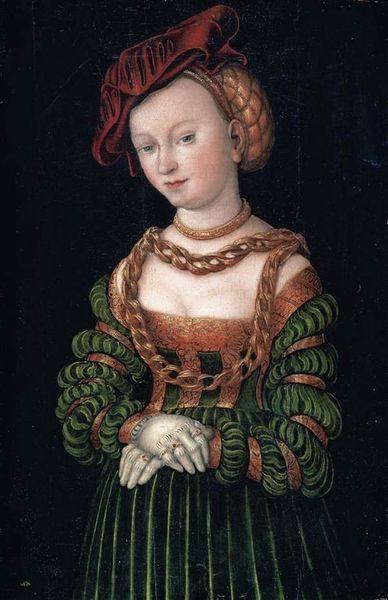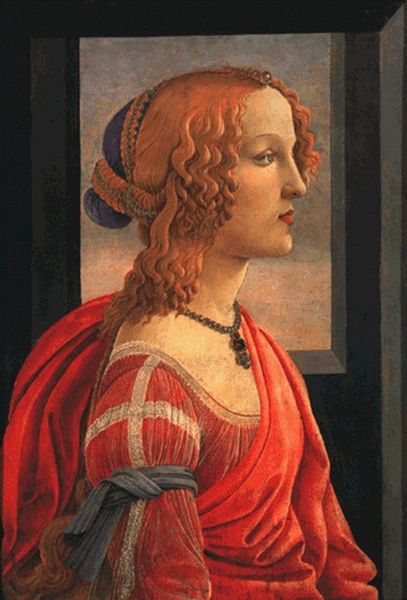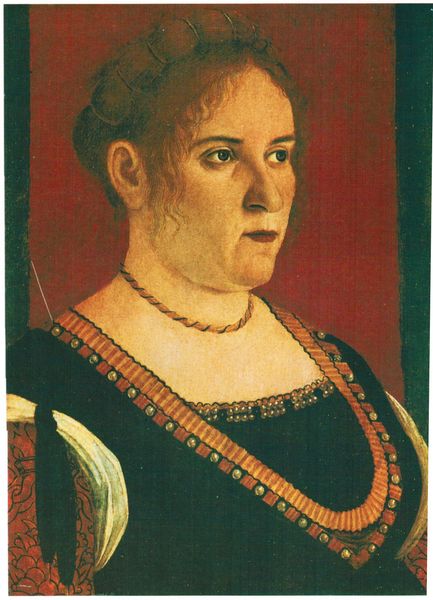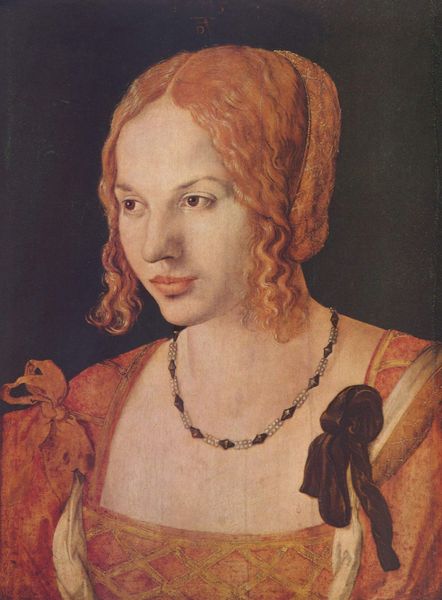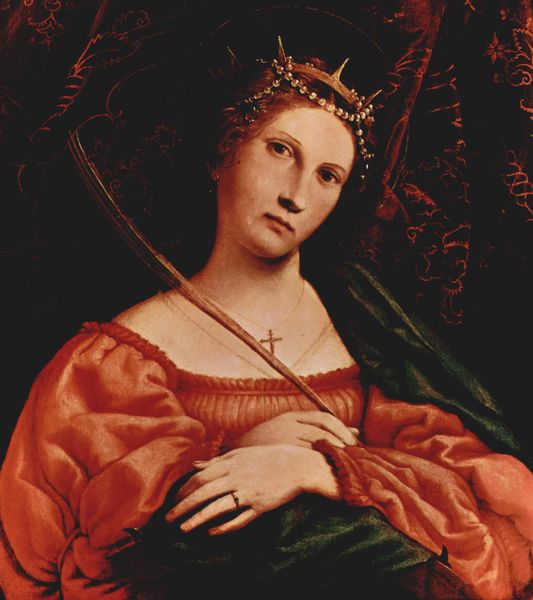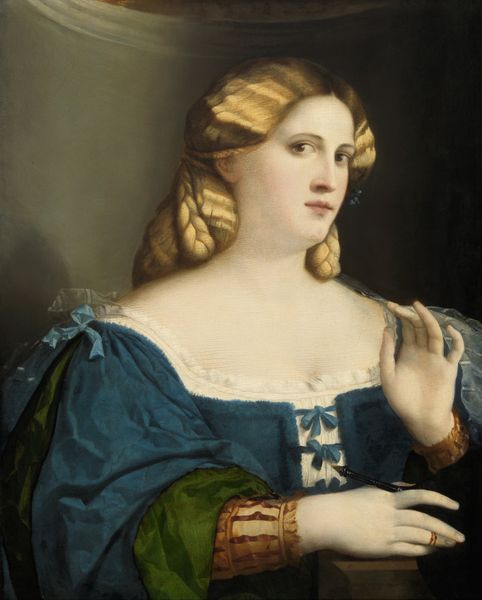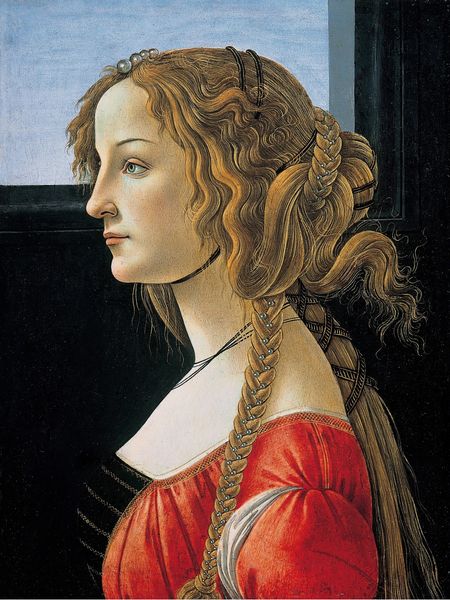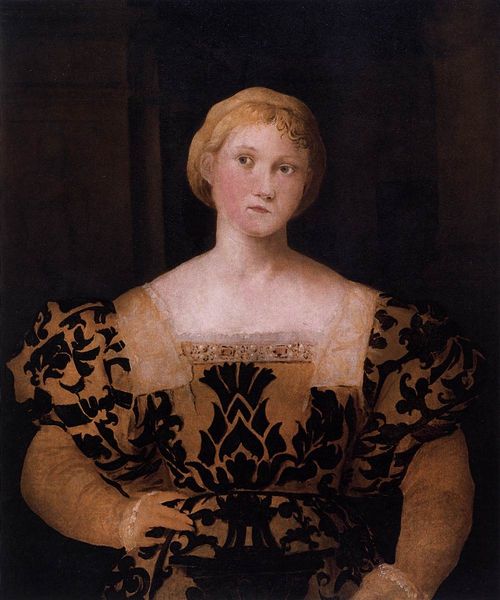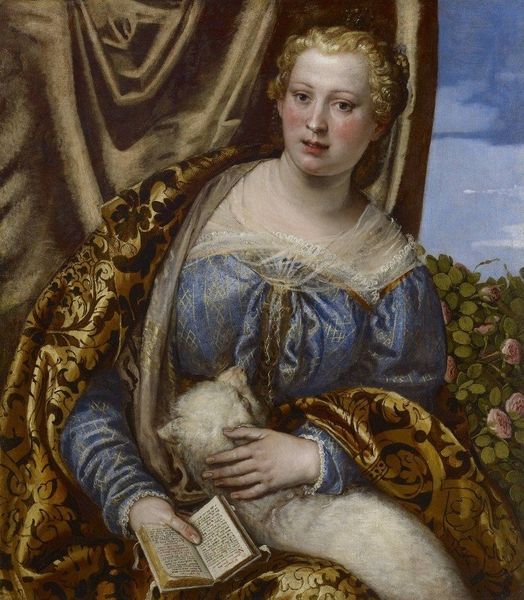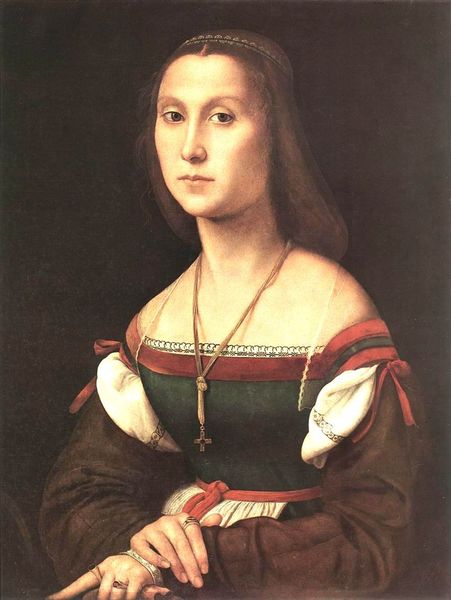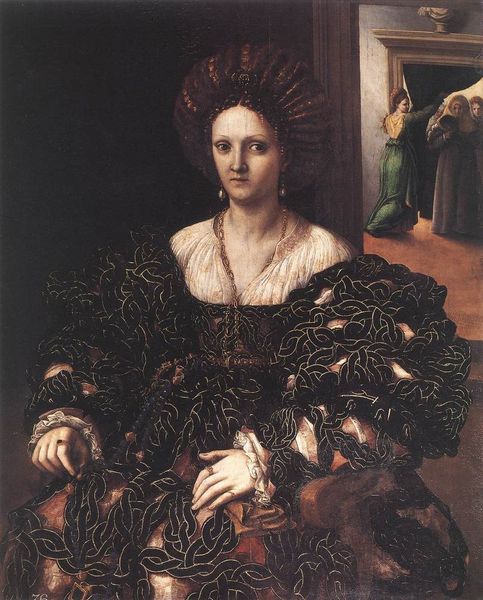
painting, oil-paint
#
portrait
#
venetian-painting
#
character portrait
#
head
#
portrait image
#
painting
#
oil-paint
#
figuration
#
portrait reference
#
portrait head and shoulder
#
portrait drawing
#
facial portrait
#
lady
#
italian-renaissance
#
portrait art
#
fine art portrait
#
realism
#
celebrity portrait
#
digital portrait
Copyright: Public domain
Curator: Welcome. We're looking at "Portrait of a Woman," an oil painting attributed to Palma Vecchio, an artist of the Italian Renaissance. Editor: There's something about the light here. It looks very rich, with this lovely surface quality that makes me want to know more about how it was achieved and, indeed, how luxurious this was. Curator: The treatment of fabrics and skin, I think, offers clues into how Venetian paintings elevated their subjects' social standing and communicated power dynamics of the era. Think about Venice at the time—a republic built on mercantile wealth. This informs not only the way artists like Palma approached their subjects but their relationship with their patrons. Editor: Absolutely. Consider also, curator, how oil paint allowed for such precise layering, making this kind of meticulous realism possible. You could build the opulence of the scene as much as that of the actual subject! Curator: True. The artist utilizes oil paints in a way that reflects a societal emphasis on the external and the material. Editor: Right. What can you discern about the woman based on the way her garments are produced? You see the sumptuous hat made with intricate work? Those would indicate her status and suggest economic privileges. Curator: And in some ways, what appears on the surface might belie something beneath. Her slightly downturned gaze could speak to a limited sphere of influence even within her station. She is almost challenging us. I imagine her identity to be at odds with how she has to exist in society. Editor: I see that. I agree the artist creates a tension between presenting material wealth and hinting at a more private or complex reality, and that's interesting. And I suspect it involved specialized labor: goldsmiths, tailors, and even pigment-makers—whose expertise shaped this portrait. Curator: These points encourage us to understand labor as more than merely production but to see how these makers imprint knowledge and understanding on objects and representations. That element, like a painter's or artisan's touch, is how these processes materialize within the portrait itself. Editor: So, we might recognize this as something to behold in museums; the economic realities of skilled labor remind us to remain attentive to the economic imbalances in art history. Curator: Precisely, reminding us of the voices often unseen but always present. Editor: I appreciate how situating these means and methods makes her gaze ever so nuanced!
Comments
No comments
Be the first to comment and join the conversation on the ultimate creative platform.
